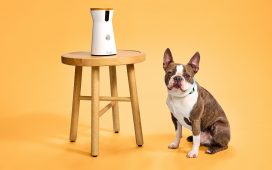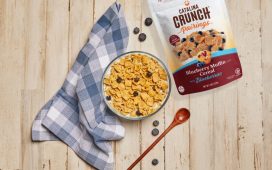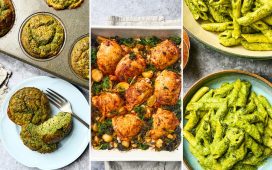BOCA RATON, FLA. — Coming off a strong fiscal 2019 the management team of Mondelez International is tasked with accelerating the company’s momentum in fiscal 2020. Chairman and chief executive officer Dirk Van de Put outlined how the company will achieve its goal during a Feb. 18 presentation at the Consumer Analyst Group of New York conference.
“Mondelez, today, is fundamentally a very different company than it was two years ago,” Mr. Van de Put said. “Our main focus is to deliver volume-driven, profitable growth. To do so, we’re increasing investments behind our global and our local brands. We have moved from a centralized to a local-first commercial approach, which has improved accountability, and it also has made us much more agile and consumer-centric than in the past.”
The strategy paid in fiscal 2019 when Mondelez International earned $3,870 million, equal to $2.68 per share on the common stock, up 14% from $3,381 million, or $2.30 per share, in 2018. Sales for the year ended Dec. 31, 2019, were $25,868 million, essentially flat from $25,938 million in fiscal 2018.
In fiscal 2020 the company is guiding adjusted earnings per share growth in the high single digits and organic net revenue growth of 3% or greater.
“Our model is now predicated on driving volume growth and winning in the market in order to drive more absolute profit dollar growth,” said Luca Zaramella, chief financial officer. “The company is no longer overly fixated on margin percentages. This has helped to unlock some of the potential around our local brands and our channels.
“The higher absolute profit dollars that we generate are reinvested back into the business to continue the cycle, while flowing the remainder to the bottom line to drive sustainable high single-digit e.p.s. and free cash flow. We do this in a local-first commercial approach, while tapping into our global scale and infrastructure to ensure we are creating operating leverage and investing in the business, alongside continued cost discipline.”
Mr. Van de Put gave four reasons why he sees more growth on the horizon.
“One, our categories are strong and snacking is a growing behavior around the world,” he said. “Two, we are a market leader, but still a significant headroom in our categories; three, we have growth potential in both developed and developing markets; and four, we see opportunities in high-value adjacent categories.”
He added that Mondelez has the balance sheet flexibility to pursue acquisitions as well.
To drive the point home about how more consumers are integrating snacking into their daily lives, Mr. Van de Put said long term Mondelez expects snacking category growth to be approximately 3%, which is above other food categories.
“The number of snacking occasions per day has risen by nearly 20% in recent years,” he said. “Nearly two-thirds of adults prefer more smaller meals over larger ones; and among younger consumers, the snacking trend is even stronger.
“To reinforce the point even more, the categories we are focused on will represent 50% of the growth in packaged snacks in the next three years. Overall packaged snacks is around a $700 billion market. Our core snacking categories and the close-in adjacencies represent $400 billion of that $700 billion and will grow another $50 billion by 2022.”
Areas of opportunity identified by Mr. Van de Put included category adjacencies, licensing and health.
“We will aggressively pursue opportunities, such as pastries, bakery and bars, which are a natural fit with our core portfolio and where our brands have the right to win,” he said. “We’ve done this already with the ongoing expansion of our Chocobakery portfolio.”
Mondelez also will strive to offer products that meet the consumers’ varied definition of health.
“Some consumers want permissible treats with inclusions, like fruit and nuts, or they want less sweet chocolates or even their favorite treats, but in smaller portions,” Mr. Van de Put said. “Others want better-for-you options, like gluten-free or the reduced sugar, like 30% less Cadbury we sell in the U.K. and in India.
“And then for many, well-being also comes through a story around provenance and sourcing, like our organic Cote d’Or chocolate or our non-G.M.O. Triscuit. And finally, some consumers are looking for functional benefits, like high-protein, super foods or fortification. Our Perfect Bars are a good example of this one.”
Mr. Van de Put said that since taking over as c.e.o. he has worked to change Mondelez’s culture from a focus on costs to a focus on growth, and from a company that is “globally controlled to locally driven.”
“I’m proud, very proud, of how the teams have embraced this new culture,” he said. “I think you can see their commitment in our 2019 financial results. I strongly believe that this new model and strategy provides the basis for sustained long-term growth of Mondelez.”







